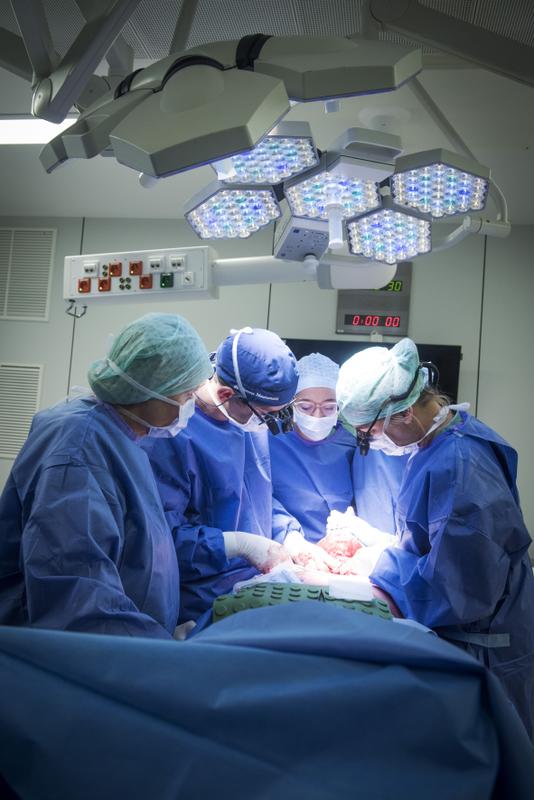If a laryngeal nerve is damaged, one of the vocal cords may stop working so that the vocal cords no longer close properly. As a result patients may suffer extreme hoarseness and swallowing or breathing problems. The nerve may be damaged as a result of an operation in the chest cavity or neck, although sometimes the cause of the vocal cord disorder may not be known.
Nerve impulses
A new operating technique, i.e. a so-called non-selective laryngeal reinnervation, ensures that the vocal cord receives nerve impulses again. “The damaged laryngeal nerve is grafted onto another unaffected nerve in the neck. The nerves are cut and attached under a microscope using ultra fine thread. The vocal cord doesn't actually start to move but it does receive nerve impulses again. This strengthens the vocal cord muscle so that it moves towards the other vocal cord once more,” doctor Jeroen Meulemans, the ENT and facial and neck surgeon who performed the operation at UZ Leuven, explained.
The advantage of the new technique is that the result is permanent and the risk of infection or rejection is lower because it does not involve the introduction of a foreign body
Until recently the disorder was treated with an injection, which thickens the non-working vocal cord, thus improving the closing of the vocal cords again. “However, this only has a temporary effect and is an expensive form of treatment,” doctor Meulemans added. “Another option is to insert a silicone stent into the larynx to push the non-working vocal cord more towards the centre. Again the effect is often only temporary with this type of treatment, because the non-working vocal cord becomes thinner after a while, requiring the insertion of a larger stent. It is also associated with a risk of infection or rejection because of the introduction of a foreign body.”
The operation has a success rate of no less than 98%.
Permanent result
The advantage of the new technique is that the result is permanent and the risk of infection or rejection is lower because it does not involve the introduction of a foreign body. Moreover, research has shown that the operation has a success rate of no less than 98%. Doctor Meulemans: “The result of the intervention is noticeable after four to six months. To bridge this period the patient will receive an injection to thicken the vocal cord at the same time as the laryngeal reinnervation, which means that there is an immediate positive result.”
Speedy recovery
The operation, which is performed under general anaesthetic, only requires a small incision. Patients can leave the hospital after one to two days and will notice a result after three days of resting their voice. In fact, cutting the healthy donor nerve is not a problem because the muscles controlled by the nerve do not have a vital function.
To qualify for the operation you have to be below the age of seventy and you should not have had any major neck surgery, because in such cases the healthy donor nerve will often have been severed. Finally, the problems need to have been present for at least nine months to verify whether the flexibility of the vocal cord could spontaneously be restored. Children are a specific target group for this treatment because they cannot be treated using traditional methods.

